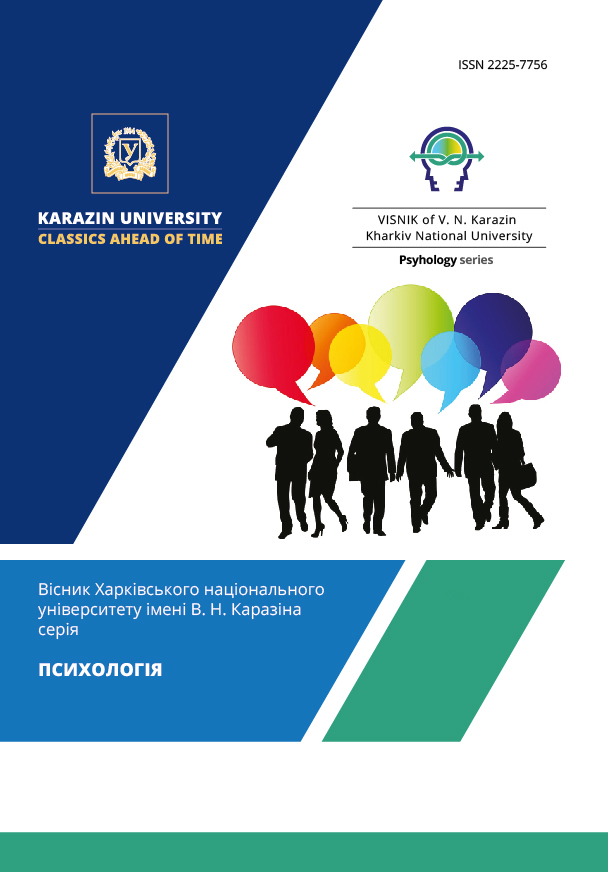Socio-Psychological Characteristics of the Suspect's Personal Profile During a Polygraphical Examination
Abstract
The article analyzes the expediency and importance of describing the personal profile of individuals during a polygraph survey and ascertaining their involvement in the commission of a crime. Since the field study on the involvement of individuals does not always can give a reliable conclusion, there is a need to create a psychological profile of the individual. A thorough analysis of personal characteristics that are dominant in the profile, a combination of reactions obtained through polygraph examinations and fixed nonverbal manifestations of a person during a polygraph examination, make it possible to conclude that the suspects are involved in the commission of a crime. Only in this case analysis of suspects' profiles can make the most accurate and true conclusion. The results of the conducted research prove that it should be noted that the persons involved in the commission of the crime and persons not involved, the highest figure on the scale of "Reactive aggression". Unrelated to the crime, in contrast to those involved, there is a high rate on the "Irritability" scale, which indicates the presence of emotional instability and the tendency to react to the affective response in order to avoid tension. High rates on the scale of "Emotional lability" are revealed in both groups, but somewhat predominate in persons involved in a crime. It is worth noting that the persons involved in a crime, unlike those who are not involved, are more constrained, uncertain in themselves, rarely show caution in establishing contacts with others, but they seek to expand them. Persons not involved in committing a crime are dominated by respiratory failure, abnormal functioning of the gastrointestinal tract, and sleep problems. They have complicated functioning of attention. There is a feeling of anxiety, which is accompanied by various emotional reactions - shame, anger, guilt, fear.
Downloads
References
Bilenchuk, P.D. (2013). Audiovisual psychophysiological diagnosis of a person: history, theory, practice. К. (in Ukrainian).
Bourke, M.L., Fragomeli, L., Detar, P.J., Sullivan, M.A., Meyle, E. & O'Riordan, M. (2015). The use of tactical polygraph with sex offenders. Journal of Sexual Aggression, 21(3), P.354-367. https://doi.org/10.1080/13552600.2014.886729
Burbelo, B.A (2015). Use of special knowledge when studying the identity of a suspect. Young scientist. 2(17). 726-728 (in Ukrainian).
Donathy, M.L., & Wilcox, D.T. (2013). Case study of a school headmaster/ preferential paedophile: Denial, risk and public protection issues. Breakout Session for the National Organisation for the Treatment of Abusers (NOTA). Fircroft College, Birmingham.
Gannon, T.A., Wood, J.L., Pina, A., Tyler, N., Barnoux, M.F.L., & Vasquez, H.A. (2014). An evaluation of mandatory polygraph testing for sexual offenders in the United Kingdom. Sexual Abuse: A Journal of Research and Treatment, 26(2), P.178 203.
Gannon, T.A., Wood, J.L., Pina, A., Vasquez, E.A., Fraser, I. (2012). The evaluation of the mandatory polygraph pilot. London, UI: Ministry of Justice
Grubin, D. (2002). The potential use of polygraphy in forensic psychiatry. Criminal Behaviour and Mental Health, (12), 45 55.
Grubin, D. (2010). A trial of voluntary polygraph testing in 10 English proba: Ion areas. Sexual Abuse: A Journal of Research and Treatment, 22(3), 266- 278.
Konovalova, V.E (1999). Interrogation: tactics and psychology. Kharkov : Konsum. (in Ukrainian).
Kovalchuk, S.O. (2001). Polygraph as an unconventional forensic means and the possibility of its use in criminal proceedings. Actual problems of criminology. 4, 92-100. (in Ukrainian).
Lendiel, A. (2016). Conducting expert-forensic research using a polygraph in criminal proceedings: advantages and practical problems. Scientific blog Ostroh Academy National University. https://naub.oa.edu.ua/https://naub.oa.edu.ua/ (in Ukrainian).
Motliach, I.O. (2013). Psychophysiological examination using a polygraph as a possible source of evidence. Repository of the National Aviation University. Scientific articles. 11(2). 117-121 (in Ukrainian).
Nanivskyi, V., Leshkovych, T. (2014). Prospects for the use of a polygraph in criminal proceedings. Bulletin of the National Academy of Public Prosecutor of Ukraine, 1(34), 33–38. (in Ukrainian).
Nazarov, O.A. (2017). Problems of standardization in the field of instrumental psychophysiological lie detection in Ukraine. Reliability assessment: scientific research and practice: a collection of articles. V.O. Shapovalova. (Ed.) K.: Osvita Ukrainy. (in Ukrainian).
Peachey, P. (2014, January 5). No privatised lie detector tests for sex offenders following outsourcing scandals involving G4S and Serco. Independent Newspaper.
Podlesny, J.A. (1977). Physiological measures and the detection of deception. Psychol. Bull, 84(4). 782-799.
Punda, O.O. (2013). The right to personal integrity and the prospects of using the polygraph in criminal proceedings. Comparative and analytical law, 3(1), 366-369 (in Ukrainian).
Skriabin, O.M., Tonne, N.D. (2014). Use of the polygraph in the forensic legal process of Ukraine. Scientific Bulletin of Kherson State University, 189–194. (in Ukrainian).
Spruin, E., Wood, J.L., Gannon, T.A. & Tyler, N. (2018). Sexual offender’s experiences of polygraph testing: a thematic study in three probation trusts, Journal of Sexual Aggression, 24(1). 12-24. https://doi.org/10.1080/13552600.2017.1378025
Wilcox, D.T., & Gray, R. (2012). The use of the polygraph with sex offenders in the UK. European Polygraph, 6(19), 55 68.




